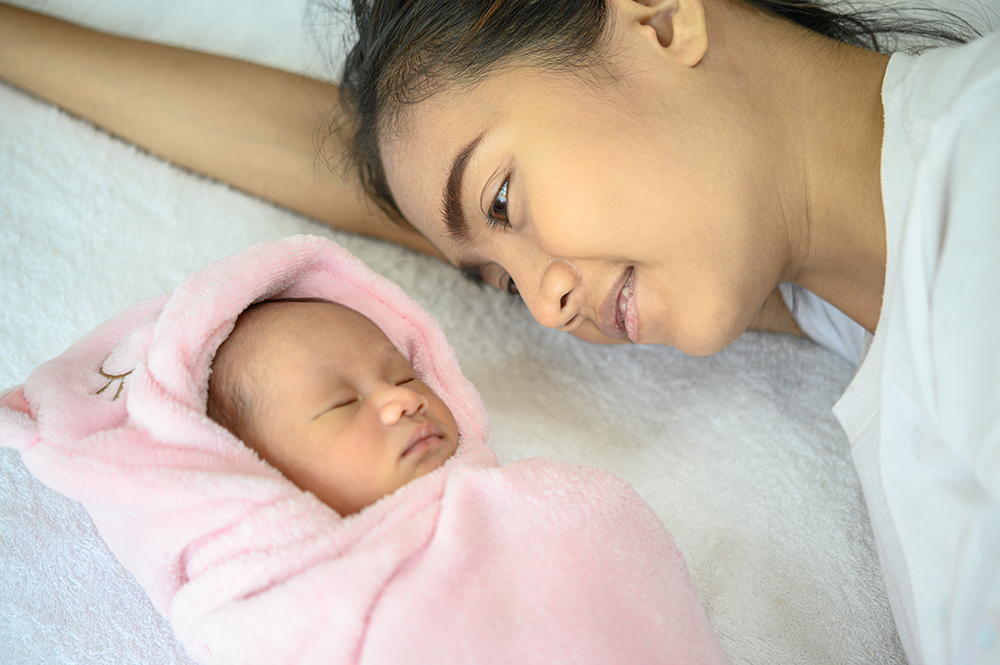Delivery can be a joyous occasion. It can also bring some unexpected challenges, especially for women who have a C-section. One of these challenges can be tailbone pain. The tailbone, the coccyx, is important in supporting the pelvic region. It’s a small, triangular bone made up of three to five fused vertebrae at the end of the spine. It serves as an attachment site for muscles, ligaments and tendons that provide stability to the pelvis. It also helps with weight bearing while sitting and supporting the body’s weight during activities like standing, walking and childbirth. Pain in the tailbone region is known as coccydynia.
What can cause tailbone pain after a C-section?
Several factors can contribute to tailbone pain after a C-section:
- Baby’s size — The baby’s size can pressure the pelvic region during pregnancy and delivery. Larger babies may need more maneuvering during a C-section. This can affect surrounding structures. The force needed to deliver a larger baby can cause postoperative tailbone pain.
- Baby’s position during pregnancy — The baby’s position during pregnancy can affect delivery. Babies who are positioned awkwardly can place added stress on the pelvic area. This stress can include the tailbone. Some babies may need more intricate maneuvers during the C-section. This can affect the tailbone and surrounding tissue. This can cause discomfort post-C-section.
- Pregnancy-induced changes — Pregnancy causes a number of changes in a woman’s body during pregnancy. These changes can play a large role in tailbone pain after a C-section. Hormones fluctuating, ligaments relaxing and posture changing to accommodate a growing baby can all contribute to changes in the pelvic region. Some of these changes can continue postpartum and cause tailbone pain.
- Epidural use — Epidurals are commonly used for pain management during labor and C-sections. They can provide effective pain relief but can also cause trauma and inflammation at the insertion site. An epidural can also keep a woman’s body from recognizing that it is in a stressed position and should change. An epidural can increase the risk of lower back pain after delivery from 39% to 52%.
- Referred pain from C-section scar — A C-section is a major abdominal surgery, and it can be common for a woman to develop scar tissue adhesions. When tissue pulls on the cesarean scars, it can cause upper and lower back pain, hip discomfort and pelvic pain.
Treatment options available for tailbone pain after a C-section
Addressing tailbone pain after a C-section can take a multifaceted approach incorporating medical interventions, lifestyle modifications and targeted therapies. Treatment options can include:
- Pain medications — Over-the-counter pain relievers can help manage pain and reduce inflammation.
- Cushioned seating — Using a donut-shaped cushion or seat with extra padding can help alleviate pressure on the tailbone while sitting.
- Cold and heat therapy — Applying cold packs or a heating pad to the affected area can help reduce inflammation and relieve pain.
- Posture correction — Good posture can help reduce strain on the tailbone. It’s important to use proper body mechanics when performing activities such as lifting the baby, breastfeeding and sitting.
- Physical therapy — Physical therapy can be a beneficial treatment to help reduce pain and restore the natural movement of muscles in the lower back and pelvic region.
- Lifestyle modifications — Changes to your daily routine can help you during recovery. These changes include avoiding sitting for long periods, using proper body mechanics and adding gentle exercises.
Physical therapy techniques for tailbone pain after a C-section
A woman’s body goes through the wringer during pregnancy, delivery and postpartum recovery. Physical therapy can be an excellent approach to help manage and alleviate tailbone pain after a C-section. Techniques that may help include:
- Manual therapy — Manual therapy can treat muscle imbalances and relieve joint restrictions. It can help target specific areas of discomfort around the tailbone and improve healing. Through targeted manipulation, a physical therapist can help alleviate tension, improve blood circulation and restore optimal function, which can significantly improve the recovery from tailbone pain after a C-section.
- Trigger point therapy — Trigger point therapy identifies and treats areas of muscle tightness called trigger points. This technique can help release tension and boost circulation. It can help promote relaxation, relieve pain and potentially speed up recovery.
- Pelvic floor training — Exercises designed to help strengthen the pelvic floor muscles can help improve stability and reduce strain on the tailbone. These exercises can help alleviate tailbone pain and promote overall pelvic health by boosting muscle tone and coordination.
- Therapeutic exercises — In addition to pelvic floor training, therapeutic exercises targeting the core and hip muscles can also help improve the overall support of the tailbone. Exercises will be chosen to help address specific weaknesses and muscle imbalances. They can improve strength, flexibility and coordination to reduce strain on the tailbone. These exercises can help alleviate existing pain and help reduce the chance of future discomfort.
Let Panther Physical Therapy be your partner on the path to healing from tailbone pain after a C-section
At Panther Physical Therapy, we understand that navigating postpartum challenges like tailbone pain after a C-section can be overwhelming. Our dedicated team of expert physical therapists is here to guide you on your path to recovery. We specialize in providing compassionate and customized treatments using evidence-based techniques. We are committed to helping you alleviate your tailbone pain and gain the comfort and strength to embrace the joys of motherhood. Your well-being is our priority, and we want to help you thrive in this new chapter of life.
Call us or request an appointment today to start your journey to tailbone pain relief and better pelvic health.
